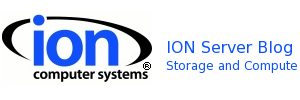“But wait,” you say, “price and performance aren’t everything!” Really? You are correct.
Reliability counts when your data is sitting on the drive. To start with, think about microscopic magnetic heads flying back and forth over platters spinning at 7,200 rpm to 15,000 rpm. Need I say more? We can compare manufacturer’s MTBF (Mean Time Between Failure) numbers, but nobody really knows how they are determined and nobody who has supported populations of disks believes them. In Intel’s study of 36,000 SSDs deployed internally, they saw failure rates 90% lower than HDDs. So compare a hand-full of Flash memory devices or spinning rust, and you decide which is more reliable.
Consider some of the things that contribute to reliability, like vibration. HDDs cause vibration in your system and they are susceptible to vibration. SSDs cause no vibration at all and are immune to quite a lot of vibration. Vibration, of course, is another word for noise. The SSD does not vibrate, so the SSD makes no noise. Have you heard a hard disk when it get’s busy? What about 480 in a rack?
Power consumption is something that most people are starting to think about. Average operating power on the enterprise HDD is around 7.5W. For the 800GB MLC SSD it is 5W. 33% power savings is a good start. A power-optimized system will spin down the hard disks when they are idle, to save power. The enterprise HDD can drop to about 4W when idle, but the system waits a while to decide to idle, and then it takes some time to spin up and be ready again. The SSD drops to less than 1W when it is idle, because it has no motors to spin, and it does so almost instantly.1 And returns to full speed instantly.
Think for a moment about performance/power at the system level. An SSD-optimized server like ION’s SR-71mach4 SpeedServer delivers about 1000 IOPS/W.* A typical enterprise storage platform performs 33 IOPS/W. That is 30x more I/Os per second per Watt. That is way beyond “good”.
Another way to think about power is heat. So, the SSD produces half the heat of the HDD when it is active and less than one quarter of the heat when it is idle. That means that system fans can spin slower and save even more power. And if you are thinking about racks full of disks in your data center, that has a big impact on your air conditioning requirements. If IOPS is your concern, and not capacity, an SSD solution does not cut your power in half, it replaces 2-5 racks full of HDDs with a single 2U system with SSDs. That’s a power savings of up to 99%. And the same for data center footprint.
Everybody has, or should have, their own template for calculating Total Cost of Ownership, or TCO, in their organization. Or their family, for that matter. It should include purchase price, of course, but also costs for power, cooling, space, and maintenance. And in many organizations, there should be a factor for performance, too. How much less time could everyone spend waiting for data and what does that cost over the course of a year? It is time to start thinking about your TCO for any disk-based solution you consider.
